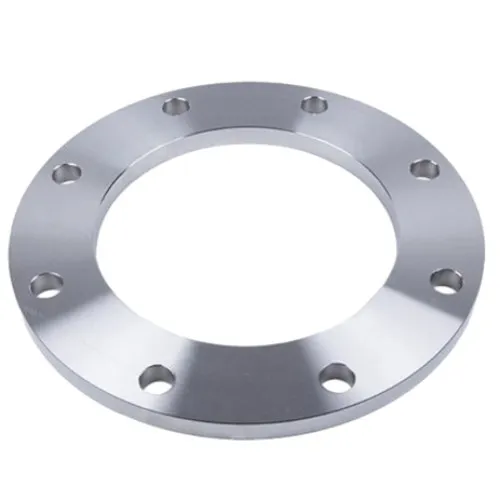-
Cangzhou Yulong Steel Co., Ltd.
-
Phone:
+86 13303177267 -
Email:
admin@ylsteelfittings.com
- English
- Arabic
- Italian
- Spanish
- Portuguese
- German
- kazakh
- Persian
- Greek
- French
- Russian
- Polish
- Thai
- Indonesian
- Vietnamese
- Zulu
- Korean
- Uzbek
- Hindi
- Serbian
- Malay
- Ukrainian
- Gujarati
- Haitian Creole
- hausa
- hawaiian
- Hebrew
- Miao
- Hungarian
- Icelandic
- igbo
- irish
- Japanese
- Javanese
- Kannada
- Khmer
- Rwandese
- Afrikaans
- Albanian
- Amharic
- Armenian
- Azerbaijani
- Basque
- Belarusian
- Bengali
- Bosnian
- Bulgarian
- Catalan
- Cebuano
- China
- China (Taiwan)
- Corsican
- Croatian
- Czech
- Danish
- Esperanto
- Estonian
- Finnish
- Frisian
- Galician
- Georgian
- Kurdish
- Kyrgyz
- Lao
- Latin
- Latvian
- Lithuanian
- Luxembourgish
- Macedonian
- Malgashi
- Malayalam
- Maltese
- Maori
- Marathi
- Mongolian
- Myanmar
- Nepali
- Norwegian
- Norwegian
- Occitan
- Pashto
- Dutch
- Punjabi
- Romanian
- Samoan
- Scottish Gaelic
- Sesotho
- Shona
- Sindhi
- Sinhala
- Slovak
- Slovenian
- Somali
- Sundanese
- Swahili
- Swedish
- Tagalog
- Tajik
- Tamil
- Tatar
- Telugu
- Turkish
- Turkmen
- Urdu
- Uighur
- Welsh
- Bantu
- Yiddish
- Yoruba

Oct . 06, 2024 04:07 Back to list
api x52 specification
Understanding the API X52 Specification A Comprehensive Overview
The American Petroleum Institute (API) X52 specification is a critical standard within the realm of oil and gas pipelines, particularly focusing on the properties and requirements for steel pipes. This specification is essential for maintaining safety, integrity, and efficiency in the transportation of hydrocarbons. As global energy demands continue to rise, the relevance of the API X52 standard becomes increasingly evident.
Historical Context
The API established its specifications to ensure that materials used in the industry meet certain performance criteria. The X52 specification falls under the larger category of API 5L, which covers line pipe for both onshore and offshore pipelines. The number 52 indicates the minimum yield strength of the steel, which is set at 52,000 psi (pounds per square inch). This yield strength is crucial for determining how much stress the material can withstand before deforming.
Chemical Composition and Mechanical Properties
One of the core aspects of the API X52 specification is its stringent requirements for chemical composition and mechanical properties. The standard outlines specific limits for elements such as carbon, manganese, phosphorus, sulfur, and silicon, ensuring that the pipe can endure hostile environments.
The mechanical properties detailed in the X52 specification include yield strength, tensile strength, and elongation. Notably, the yield strength of 52,000 psi must be maintained along with a maximum tensile strength of around 69,000 psi. The elongation requirement ensures that the pipe can withstand not just linear loads but also circumferential stresses without failure. This combination of properties is designed for optimal performance under pressure while ensuring safety.
Manufacturing Process
api x52 specification

The manufacturing of API X52 steel pipes involves several stages, including steelmaking, forming, and finishing. The production process typically uses techniques such as hot rolling, which helps achieve the required mechanical properties while reducing internal stresses. Welded pipes may also be produced under this specification, involving processes like electric resistance welding (ERW) or submerged arc welding (SAW).
Quality control is vital throughout the manufacturing process, and various tests are mandated by the API X52 standard. These include non-destructive testing (NDT) methods, such as ultrasonic testing, to detect any flaws in the pipe. The incorporation of such rigorous quality checks ensures that the resultant products meet the high standards required for safe operation in the field.
Applications
Pipes manufactured to the API X52 standard are predominantly used for transporting natural gas, oil, and water in various pipeline systems. Their robust nature and high yield strength make them suitable for high-pressure applications. The specification is often adopted for projects involving gas transmission pipelines, where safety is paramount, as the consequences of failure can be catastrophic.
Moreover, the versatility of API X52 pipes extends to offshore operations and urban settings, where corrosion resistance and durability are essential. The ability to withstand extreme conditions, including high temperatures and pressures, makes these pipes invaluable in modern infrastructure.
Conclusion
In conclusion, the API X52 specification serves as a benchmark for steel pipeline quality and performance in the oil and gas industry. Its focus on yield strength, chemical composition, and rigorous testing procedures ensures that the pipes not only meet industry standards but also contribute significantly to operational safety and efficiency. As global energy needs evolve, the relevance of such standards will only amplify, driving innovations and advancements in pipeline technology. Adhering to standards like API X52 not only ensures regulatory compliance but also enhances the sustainability and reliability of energy transportation systems worldwide.
Latest news
-
ANSI 150P SS304 SO FLANGE
NewsFeb.14,2025
-
ASTM A333GR6 STEEL PIPE
NewsJan.20,2025
-
ANSI B16.5 WELDING NECK FLANGE
NewsJan.15,2026
-
ANSI B16.5 SLIP-ON FLANGE
NewsApr.19,2024
-
SABS 1123 FLANGE
NewsJan.15,2025
-
DIN86044 PLATE FLANGE
NewsApr.19,2024
-
DIN2527 BLIND FLANGE
NewsApr.12,2024
-
JIS B2311 Butt-Welding Fittings LR/SR 45°/90° /180°Seamless/Weld
NewsApr.23,2024











